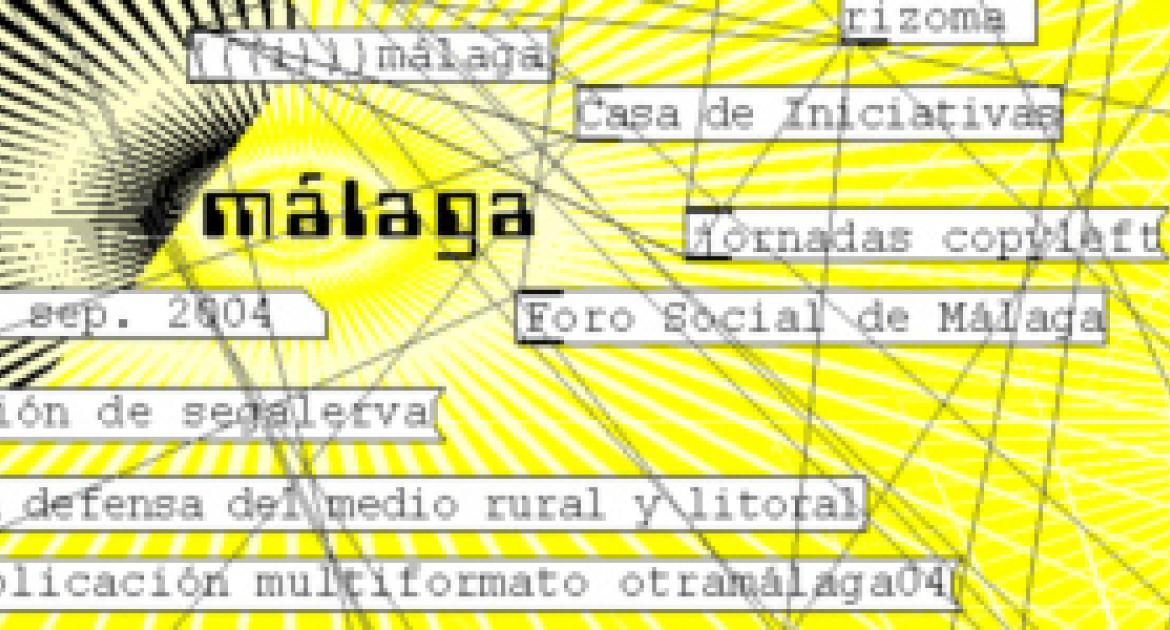Cartografía del estrecho 2.0 (Cartography of the Strait 2.0)

>Proposal for Visualizar'08 Database City
Background: Cartografía del Estrecho de Gibraltar (Cartography of the Strait of Gibraltar), 2004
Throughout 2004, a collaborative team (1) developed the project titled “Una cartografía del territorio geopolítico del Estrecho de Gibraltar” (“A Cartography of the Geopolitical Territory of the Strait of Gibraltar”). The visible result of this collaboration was two maps on paper (Sides A and B) that provided alternative readings of this unique territory. The project arose from the Indymedia Estrecho project, linked to FADAIAT 2004, a gathering of artists, activists and technologists from both sides of the Strait. The aim was to present a vision from the perspective of these networks on this geographical space as a socio-political conflict zone, and also to present their own work as a project on the transformation of this territory. The three primary research-action lines for Indymedia Estrecho are reflected in the cartography: 1/ migrations and the border; 2/ new labour scenario; precarious conditions; and 3/ independent communication and free knowledge. On Side A of the cartography, processes were mapped that had been occurring in the Strait: militarization, migration, capital drain, communication and social movements. On Side B, networks of social movements active on both sides of the border were shown, and their short- and medium-term political projects- turning the map into an organizational tool as well.
The map was produced in public wiki format (for data search and organization, as well as debates related to its organization and presentation). The cartographies, however, were designed in the standard way. Final distribution was carried out on paper and digitally through the Web site, where it continues to be accessible (http://mcs.hackitectura.net).
The cartography was widely distributed among social movements in Spain, North Africa and Europe, leading to debates and discussions. It was also received with interest in academic and artistic circles, and has been reproduced and commented on in a good number of publications in Spain and abroad. It was chosen for exhibition at various artistic spaces including LAB Ciberespacios, at the inauguration exhibit at LABoral Centro de Arte y Creación Industrial, Gijón.
Proposal for Visualizar'08 Data Base City: Cartografía del estrecho 2.0 (Cartography of the Strait of Gibraltar)
Since the first version of Cartografía del Estrecho (Cartography of the Strait), we have been aware of the potential of digital media to enhance the information available to us (through layers and zooms), as well as considering a system of periodical or real time updates reflecting the reality of a territory permanently in a state of transformation. At the time, we intended to collaborate with Yves Degoyon, who developed Mapomatix, but that project was soon halted.
A second factor we have kept in mind is the participatory nature of mapping agents. While the process we developed in 2004 was participatory, we are currently weighing the option of broadening it, along the lines of wikimaps that have been created since then. Also of interest is the possibility of related the cartography to geolocation of the information generated on Indymedia Estrecho, via RSS (such as the recent development of meipi) or other technologies.
Thirdly, we thought of generating maps presenting the evolution over time of certain processes, such as the “shifting border”, in various senses and directions, that has taken place from 2004 to the present (with Frontex from the Strait toward the Sahara, Mauritania and Senegal) and through various control policies toward the interior of various state.
Fourthly, we were interested in developing conceptual maps that dialogue with maps based more on geography or social elements, like the ones from 2004. In this sense, we have worked on cartographies of political concepts and of trends in the transformation of the territory that some authors have named “post-border metropolis” .
Our proposal for Visualizar City Data Base consists, then, of coordinating a work project with the Indymedia Estrecho network, including a session at hackmeeting 09, to be held next October in Malaga, and following that, with the workshop attendees at Medialab Prado, which will lead to the development of one or more of the topics we have suggested here.
Work Team
Lot, Osfa, Alejandro Gonzalez, Pablo de Soto
Objectives
The purpose of the project is the visualization of migratory, economic, political and cultural flows through the territory-border comprising the south of Europe and the north of Africa, in an augmented reality environment.
We intend to represent all the news published on indymedia estrecho / madiaq in real time on the three-dimensional cartography of the strait.
Moreover, the system will represent interactive information on each of the items on the cartography: CIEs, migrant populations, deaths at the border, etc. All the documentation work from the previous “flat” cartography will be included and will be represented on the three-dimensional cartography with a more manageable visualization interface where more information can be represented.
Technical recommendations
- Visual engine:
The environment should be three-dimensional. An implementation proposal would be with Processing+OpenGl or Python+OpenGL.
- Data mining:
* RSS of Indymedia estrecho.
Although it is not geo-positioned, there are grid references given by each of the nodes of Indymedia Estrecho.
* Data recovered from the previous cartography.
Cities with the largest number of immigrants, most used routes, most common cities of origin, number of immigrants retained in CIE's, capital flows, etc.
* Bots
Bots can be implemented to capture data to keep the cartography updated. (Recommendation: Python+Beautiful Soup). Data sources: Spanish Ministry of the Interior, SIVE, etc.
* RSS of groups working at the border.
Carrying out filters by categories or content to visualize all emerging events.
Collaborators
Programmers in Processing and Python are needed.
If you are interested in collaborating in this project during the Visualizar'08 Database City workshop, click here.



 Medialab-Matadero Madrid
Medialab-Matadero Madrid